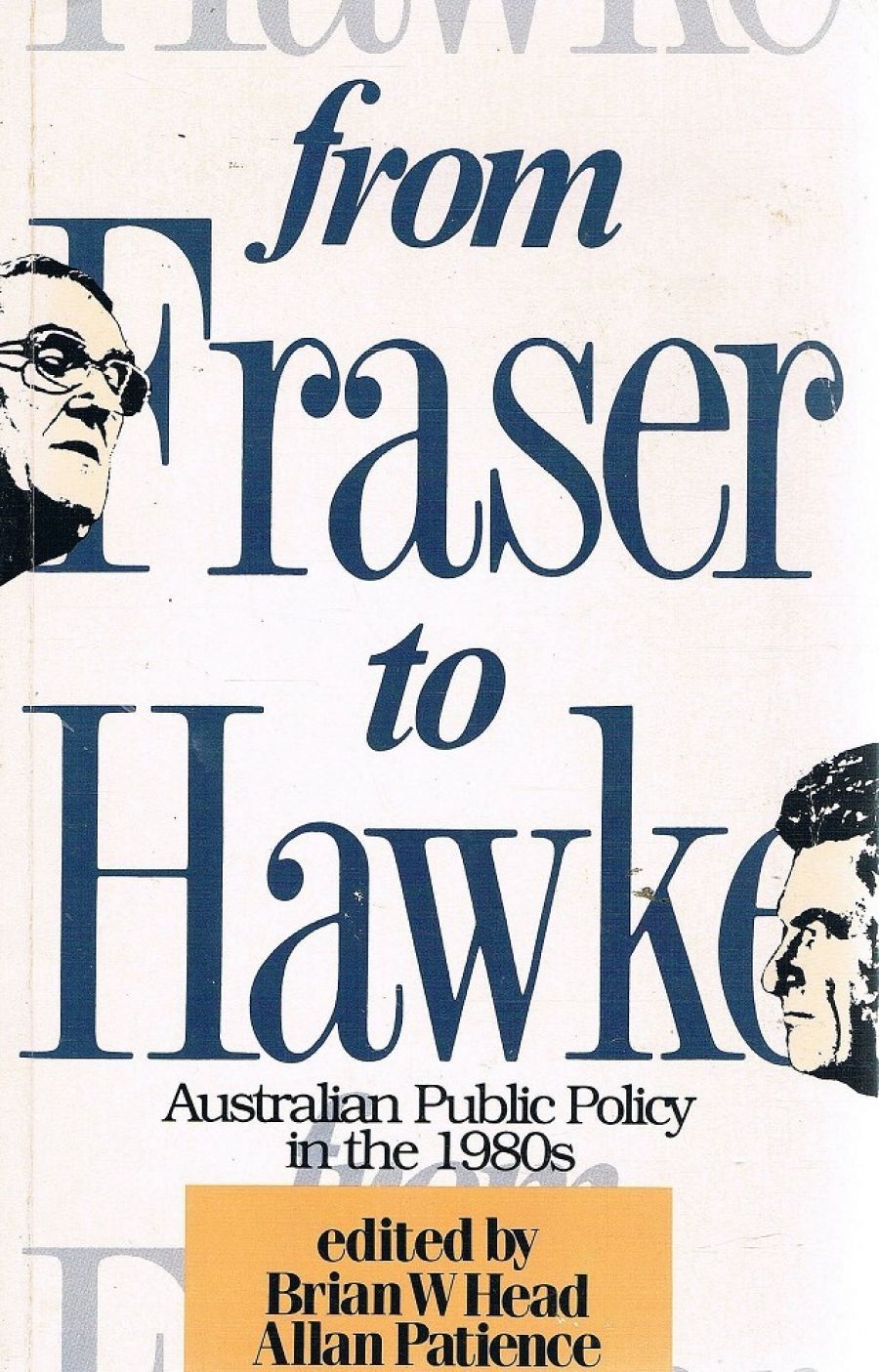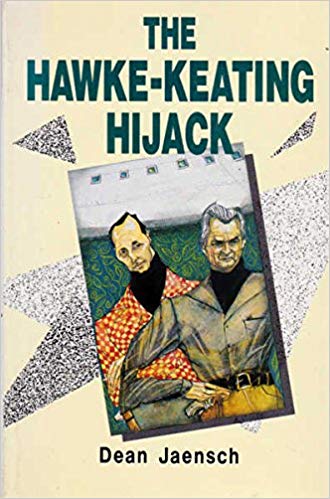
- Free Article: No
- Contents Category: Politics
- Review Article: Yes
- Online Only: No
- Custom Highlight Text:
The debate about the costs and limitations of power is as old as the ALP, but it has been given new urgency by the changes in the Party since Labor won government in 1983. So far this year, three books have been published which deal wholly or in part with the Hawke government’s relationship with the traditions of the Australian Labor Party: Carol Johnson’s The Labor Legacy, Graham Maddox’s The Hawke Government and Labor Tradition and now Dean Jaensch’s The Hawke–Keating Hijack: The ALP in transition.
- Book 1 Title: From Fraser to Hawke
- Book 1 Subtitle: Australian Public Policies in the 1980s
- Book 1 Biblio: Longman Cheshire, $19.99 pb, 525 pp
- Book 2 Title: The Hawke–Keating Hijack
- Book 2 Subtitle: The ALP in Transition
- Book 2 Biblio: Allen & Unwin, $16.95 pb, 189 pp
- Book 2 Cover Small (400 x 600):

- Book 2 Cover (800 x 1200):

- Book 2 Cover Path (no longer required): images/1_Meta/Jan-Feb_2020/51eu7xdcs5L._SX328_BO1,204,203,200_.jpg
The tension between the reforming purposes for which the party was originally formed, and its need to win support from a majority of the electorate, has been there since almost the beginning, but today, says Jaensch, the electoralists seem to be winning. He sees the shift towards a more electorally responsive party as beginning in the late 1960s – the low point in the Party’s history. In 1969, it was out of government everywhere in Australia, and it had not held federal office since 1949. Since then, Labor has broadened its social base, softened its ideology, and weakened the control of the Party organisation over the parliamentary leadership. No longer the party of blue-collar working men, it is now attractive to many members of the middle class and to increasing numbers of women. The book’s rather dramatic title is thus somewhat misleading for, as Jaensch argues, ‘the Hawke–Keating hijack is not a discrete event having its genesis in 1983; the hijack is simply the most successful in a series of attempts which began almost from the formation of the party’. The difference is that the Hawke–Keating attempt seems likely to be successful.
The book is clearly written and well argued, aimed at those who sense that today’s ALP is not the one they knew and loved, or even the one they knew and hated; they will learn a great deal from it. It does, however, somewhat overstate the significance of some of the changes. In particular, its discussion of the Party’s ideology focusses almost exclusively on the socialist objective. While this is of great symbolic importance in the party, it is not the only basis on which Labor Party supporters have distinguished themselves from their non-Labor opposition. As important to many have been the different views on the role of the State, and its need and potential for acting for the public good; Labor has also been seen by many as the natural party of reform. Here the Hawke government seems to stand in stark contrast to the Whitlam government, rather than continuing the process of change begun by Whitlam.
Jaensch looks at the recent changes in the ALP primarily in terms of the changes in the ALP’s relationship to the electorate. One can also look at them in terms of the way a party’s experience of government will affect its ideas about what is possible. The ALP is experiencing its first extended period in office since 1949, and it is not surprising that the party has changed in consequence.
How the Hawke governments have performed in most areas of public policy can be investigated in a new collection, From Fraser to Hawke. This is a sequel to the editors’ previous collection From Whitlam to Fraser, picking up the story in 1978 – when the latter finished.
The essays are detailed and substantial, providing a useful record of the changes in public policy during the period: the key pieces of legislation, the successes and failures of various ministers, changes among senior public servants, the succession of working parties, consultative committees, inquiries and reports, and other matters that influence government policy-making or are shelved when their backers lose political clout. I found Marian Sawer’s essay on women, and Leonie Sandercock’s and Lionel Orchard’s on Urban Policies particularly interesting. Two surprising omissions are arts and cultural policy (apart from the media), and the environment.
The Fraser government’s performance in its final term seemed much milder than Fraser’s confrontationist new right rhetoric. Says Head: ‘Fraser’s bark was worse than his bite’. Many on the Right regret the disparity, and now see the Fraser years as a lost opportunity. Hawke is similarly a disappointment to the Left. Labor inherited a harsh economic climate and fiscal responsibility – efficient management and economic discipline have been its primary concerns.
The essays reveal considerable continuities between the Fraser and Hawke governments. There are, of course, differences of priorities and emphasis, but apart from Graham Little’s article on the very different leadership styles of Hawke and Fraser, there is little sense of dramatic contrast between the two periods – certainly much less than in the former book with its subtitle of ‘Reform and Reaction’. As we move from the moral and psychological drama of leadership struggles, to the day-to-day processes of policy making, the contrasts blur. The book’s detailed discussion of particular policy areas shows, again and again, the complexity of contemporary policy formation processes, which impose severe restrictions on any government’s capacity for radical change, in whatever direction.


Comments powered by CComment